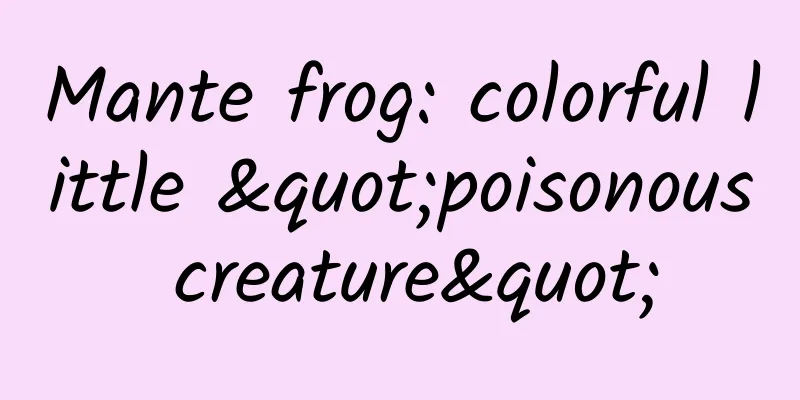Can you eat the soil on the moon? What would happen if you ate it?

|
In June this year, an American auction house is auctioning a historical object with three cockroaches as the protagonists. The auction has not yet ended, and so far, the price has soared to US$33,000. Three German cockroaches Image source: Screenshot from RRauction What's going on? Why are three cockroaches so valuable? It turns out that this is not an ordinary cockroach, but a cockroach that has eaten lunar soil. After shopping, many people will jokingly say "I'm going to eat dirt." However, have you ever wondered what the dirt on the moon tastes like? Has anyone ever eaten it? Public information shows that several animals have indeed eaten it. In 1969, when Armstrong first landed on the moon on Apollo 11, he brought back 21.6 kilograms of lunar samples when he returned to Earth, including 50 rocks, weathered soil from the lunar surface and two core samples collected from 13 centimeters below the lunar surface. Photo of astronauts collecting rock core samples in the lunar module Image source: The US National Archives The lunar samples transported back to Earth are used for various scientific research. One of their uses is something you would never imagine: feeding the lunar soil to animals such as German cockroaches to see what happens to them. Maybe you are wondering, is this experiment necessary? It is indeed necessary. Considering the first landing on the moon, people knew nothing about the conditions on the lunar surface, and whether it contained substances that were harmful to life. When the Apollo 11 crew returned to the ground, they were quarantined for 21 days (does it look familiar?) to prevent them from carrying potential pathogens back to Earth. The lunar soil was also isolated when it arrived on Earth, but in a vacuum chamber. The scientist in charge of this experiment is Marion Brooks, an associate professor of entomology and NASA's resident special consultant on entomology. She received about 18 kilograms of lunar soil and conducted experiments in the Lunar Receiving Laboratory (LRL). News report of Marion Brooks receiving lunar soil Image source: RRauction The experiment is not complicated. Ten different kinds of animals are kept in different breeding tanks, including Euglena, Paramecium, Turbellaria, Oyster, Brown Shrimp, German Cockroach, Housefly, Greater Wax Moth, Fathead Minnow, and Canadian Killifish (a small fish). They range from invertebrates to vertebrates. These animals were chosen because they are common and easy to care for and handle. The point is that scientists have done in-depth research on these animals, so they are familiar with all stages of their life history. After grinding the lunar soil into particles with a diameter of about 2 microns, half of the samples were sterilized at a high temperature of 160 degrees Celsius for 16 hours. Two weeks before the formal experiment, all experimental animals were kept in sterile plexiglass cabins to allow them to adapt to the living environment. Two experimental groups and two control groups were set up for each animal: one group in the experimental group ate sterilized lunar soil, and the other group ate unsterilized lunar soil; in the control group, one group was fed normal food but was raised in a glass cabin, and the other group was fed normal food and raised in a normal environment, serving as the control group of the control group. Grinded lunar soil Image source: RRauction Experimental notebook Image source: RRauction The results were unexpected. No experimental animals died from eating lunar soil, regardless of whether the lunar soil was disinfected or not. Instead, six days before the experiment officially began, nearly half of the fathead minnows, which were still in the process of adapting to the environment, died because scientists accidentally sprinkled some sodium hypochlorite into the fish tank. Even among the survivors, some had long-term lesions caused by residual sodium hypochlorite. Do you think these animals can survive after the experiment? No, all animals need to be dissected and microscopically sliced for more detailed physiological analysis to determine what effects they have on their bodies. Stained tissue sections of the year Image source: RRauction Brooks dissected the experimental cockroaches and made histological sections. Surprisingly, the cockroaches showed no pathological changes at all, and nothing was wrong. Everything was normal. Obviously, the experiment did not find any microorganisms in the lunar soil. The reason why it is surprising that Xiaoqiang is not dead is that although the lunar soil is non-toxic, it looks harmful in terms of physical properties. The difference between the lunar soil and the earth's soil is huge. The lunar soil is the residue of a micro-meteorite impact. Since there is no air or water erosion, each particle of dust has sharp edges and looks like broken glass. NASA-made lunar soil simulant microscope Image source: IMPACT lab Even after grinding, the lunar soil still retains its sharp jagged edges. Imagine what would happen if you ate a stomach full of broken glass. But the cockroaches ate the "glass" and their stomachs were fine. Cockroach intestinal sections show no evidence of wear No pathological changes in the microscopic tissue sections of the intestines of small fish Brooks repeated the same experiment in the lunar soil samples brought back by Apollo 12 and 13, because the lunar soil was collected from different locations, but the results were the same. On July 31, 1970, the results of this experiment were published in the journal Science, titled "Apollo 11: Exposure of Lower Animals to Lunar Material" Image source: RRauction More than 50 years later, this legendary research has once again come to the public, but in a different form. Recently, a treasure is being auctioned at RR Auction House in Boston: Items for auction Image source: RRauction The Apollo 11 lunar soil experiment includes a vial of experimental cockroach tissue sections, three well-preserved German cockroach experimental specimens, lunar soil taken from the cockroach digestive tract, and some historical materials related to the moon landing. Histological specimens of the control group and the experimental group, a total of 66 glass slides are also included in the auction. Lunar soil may not be rare, but lunar soil that is eaten by cockroaches and turned into chyme is really unique. Before I finished writing this article, there were already 10 bids, with bids as high as $30,000. The next bid price will reach $33,000. The bidding deadline is June 24, so we can wait and see its final selling price. Glass bottles for experiments Image source: RRauction But... I'm really curious about what the lunar soil tastes like. I guess it will have a bit of an iron taste (there is iron in the lunar soil). Source: Science Institute |
<<: Turning on the air conditioner in midsummer, does it save lives or kill them?
>>: Every emoticon you send may become "evidence in court"...
Recommend
Tencent advertising plan for the dental industry
1. Account Naming Standards 1. Why do we emphasiz...
[Horizontal Review] Which of the 12 online conference software is easier to use?
As the COVID-19 epidemic continues, most companie...
The essence of AR advertising is a gaming carnival?
The "Five Blessings" campaign held by A...
Are dried shrimps and soy milk good at supplementing calcium? Do middle-aged and elderly people need calcium supplements? Exposing 8 rumors about calcium supplements
Author: Xue Qingxin, registered dietitian Reviewe...
A Preliminary Look at iOS 8 Size Classes
iOS8's new feature, Size Classes, is a new ab...
How much does it cost to join the Ezhou animation mini program? What is the price for joining the Ezhou animation mini program?
Is it easy to join the Ezhou Animation Mini Progr...
Do you know the hidden ways to play the commonly used mobile phone apps?
Source: A student bully (bajie203) This article h...
Why does Xiaomi want to engage in Internet finance during the bull market?
Today, Xiaomi Finance officially launched its Int...
iQIYI APP update: supports downloading 4K HDR videos
Today, the new version of iQiyi APP is available ...
Taobao's magic tool turns iPhone into dual SIM dual standby, and the actual test is shocking
Everyone knows that the iPhone has no dual SIM ca...
Do I still need to eat breakfast if I sleep in during the weekend?
Some say it's the most important meal of the ...
How much does it cost to rent an IDC computer room in Shanghai or a server in Shanghai?
How much does it cost to rent an IDC computer roo...
When did elephants disappear in Zhejiang?
In August this year, we were delighted to hear th...
ExoPlayer supports multiple media formats and streaming protocols
ExoPlayer Introduction ExoPlayer is an open sourc...
How to do the annual review of Douyin Blue V? How much does the annual review of Douyin Blue V cost?
1. What is the use of Douyin enterprise certifica...









